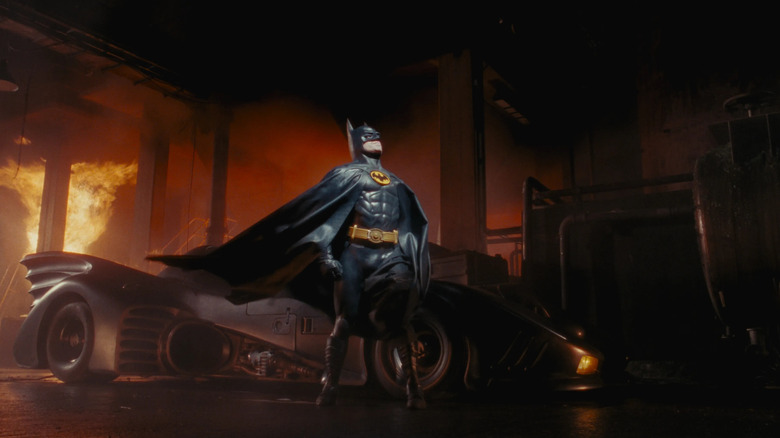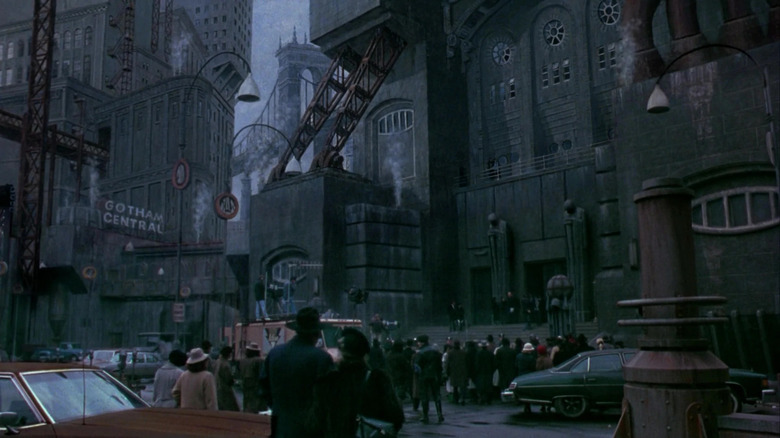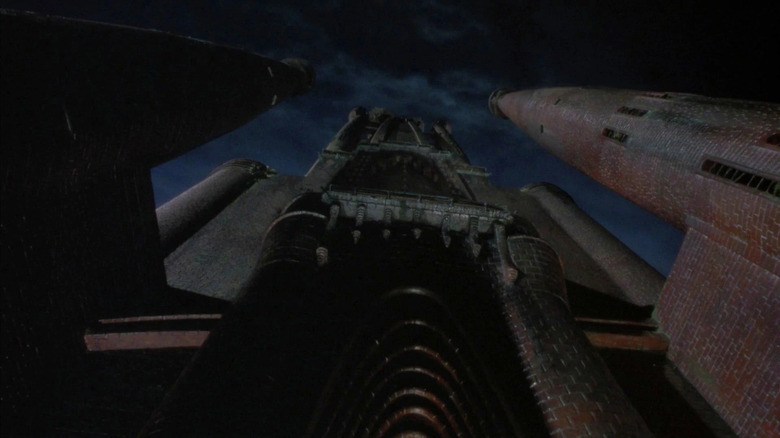Tim Burton's Batman Based Gotham On Another Dystopian Sci-Fi City
Back in 1989, superheroes were not a sure thing. The special effects required to accurately represent the fantasy action seen on the average comic book page were not yet possible, unless a studio was willing to spend a great deal of money to get it done. Additionally, while characters like Batman and Superman and Spider-Man had a good deal of cultural clout, most of the better-known superheroes of today were deemed too weird and obscure to warrant their own feature films. This is a difficult notion to fathom in a world wherein limp characters like Ant-Man appear in feature films on the regular. (Come at me, Ant-Man fans. I think I can take both of you.)
But in 1989, there was trepidation from Warner Bros. Throughout the 1970s, there were several attempts to get Batman on film, but nothing looked promising. The character, however, had begun losing traction in the popular consciousness, and a CBS-backed "Batman in Outer Space" was doomed to fail. Over the course of many years, Tim Burton's film version slowly came together. During production, some landmark Batman books were published: Frank Miller's "The Dark Knight Returns" (1986), and Alan Moore's "The Killing Joke" (1988). Batman was skewing further and further away from the colorful comedy of the 1960s into a bleak, shadowy, violent chapter. Burton latched onto this, electing to make his Batman more like "The Killing Joke," something he admitted in the Faber & Faber book "Burton on Burton," edited by Mark Salisbury.
In the finished film, it appears Burton and screenwriter Sam Hamm took a novel creative approach to Batman that would affect superhero cinema for the following decade. Rather than change Batman — an outlandish character — to fit in the real world, they changed the world to fit Batman. As such, Gotham City was a tall, implausible mashup of German expressionism, film noir, and other classic genres of the past. "Batman," as such, feels a bit timeless. Hamm revealed, in a 1989 interview magazine called the Comics Interview Super Special, his primary creative influences.
Retro-futurism
Tim Burton has said, in the same Faber & Faber book, that he wanted "Batman" to look like the future and the past simultaneously. He objected to the inclusion of Prince music on the soundtrack, as it pinned "Batman" too closely to a specific era. Complex sets and awesome matte paintings were used to create Batman's universe, and the result was something screenwriter Sam Hamm described as retrofuturist. From the Comics Interview Super Special:
"Well, I think unavoidably will there will be a bit of 'Dark Knight [Returns]' in the tone. We were trying to figure out, you know, how to handle the world of Gotham City. And we both kind of simultaneously seized on 'Brazil' as a kind of visual model, as having a kind of really interesting — I don't know what term you would use — retro-futurist look!"
Terry Gilliam's "Brazil," released in 1985, was a famously fought-over sci-fi dystopia film heavily influenced by George Orwell's "1984" and the works of Franz Kafka. It took place in a future that was overrun with bureaucracy, and where cities had become so dense there didn't seem to be a sky anymore. Apartments were small and narrow, and plumbing and tubes reached everywhere. Everything looked to be coated in soot. Looking back and forth between "Brazil" and "Batman," one can see the visual parallels.
A projection of the '80s
Sam Hamm and Tim Burton felt this Batman should take in the present, but to do so by combining the past and the future. There are high-tech devices in "Batman," but they look old and mechanical, not sleek and computerized. It was also a world that needed to accommodate a Halloween-style creature like a scary bat man and a horror movie monster like a mass-murdering clown man. It was set in 1989, but could just as easily have been the 1940s.
"[T]he idea that we liked was the movie would be set in the present day, but it would be set in a Gotham City which was in its look fairly far removed from anything which is out there at the moment. It will be a kind of nightmarish Gotham City, like if you had gone back to the '40s and taken a projection of what the 1980s or the 1990s would look like. So it's at once kind of gothic and futuristic."
In the 30-plus years since the release of "Batman," the tendency has been to push Batman further toward the high-tech, and deeper into the dark. Joel Schumacher attempted to retrofit Burton's aesthetic so it fit with the ethos of the 1960s comedy series. In 2005, Christopher Nolan rebooted the character in a more realistic world and walked Batman through practical concerns like where he would get his helmets from. By the time audiences arrived to "The Batman" in 2022, we had come back around to film noir again, only now it was a stylistic throwback to the serial killer movies of the 1990s. Everything cycles back and forth.


